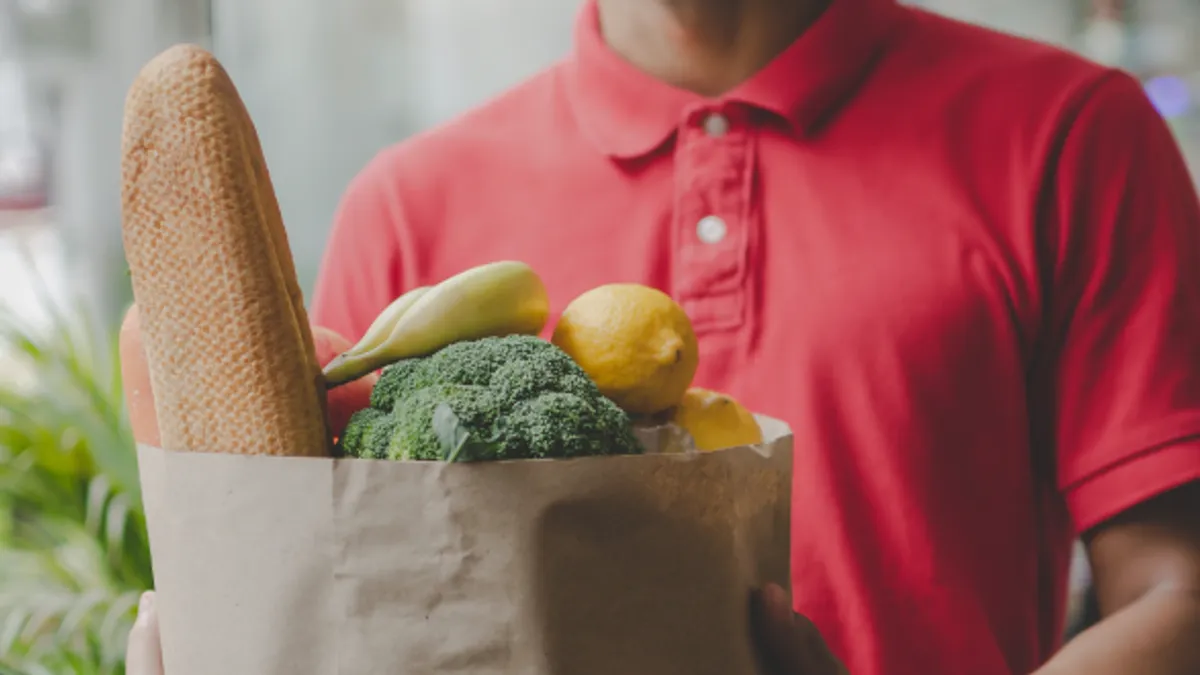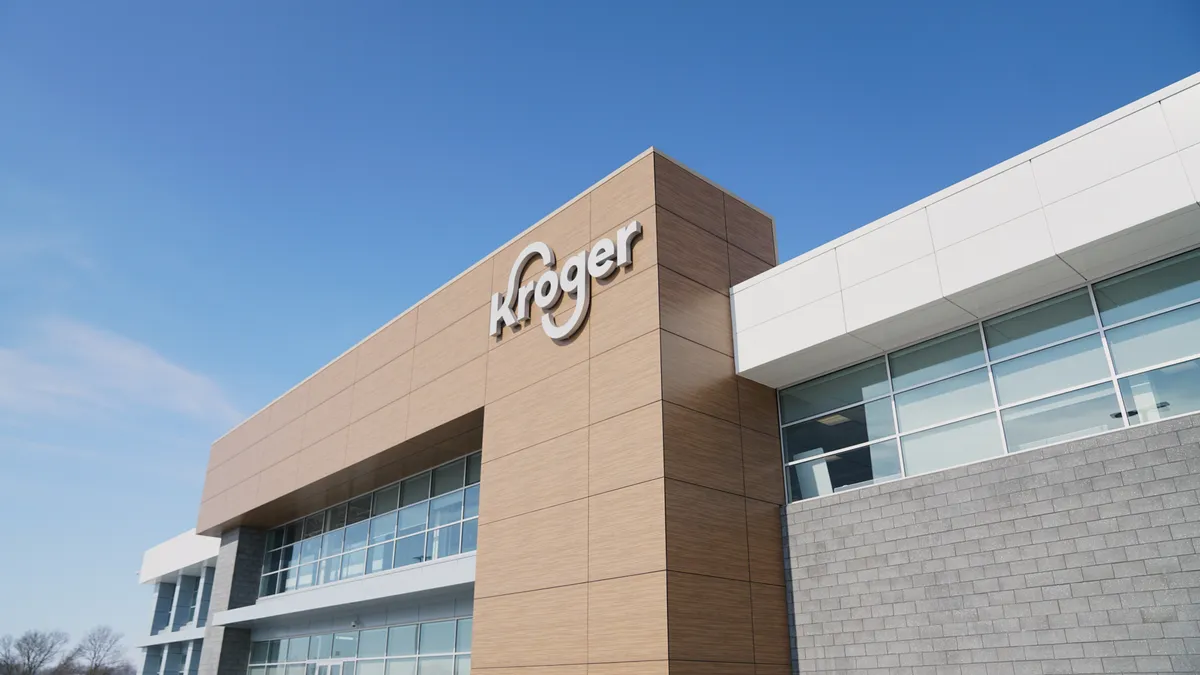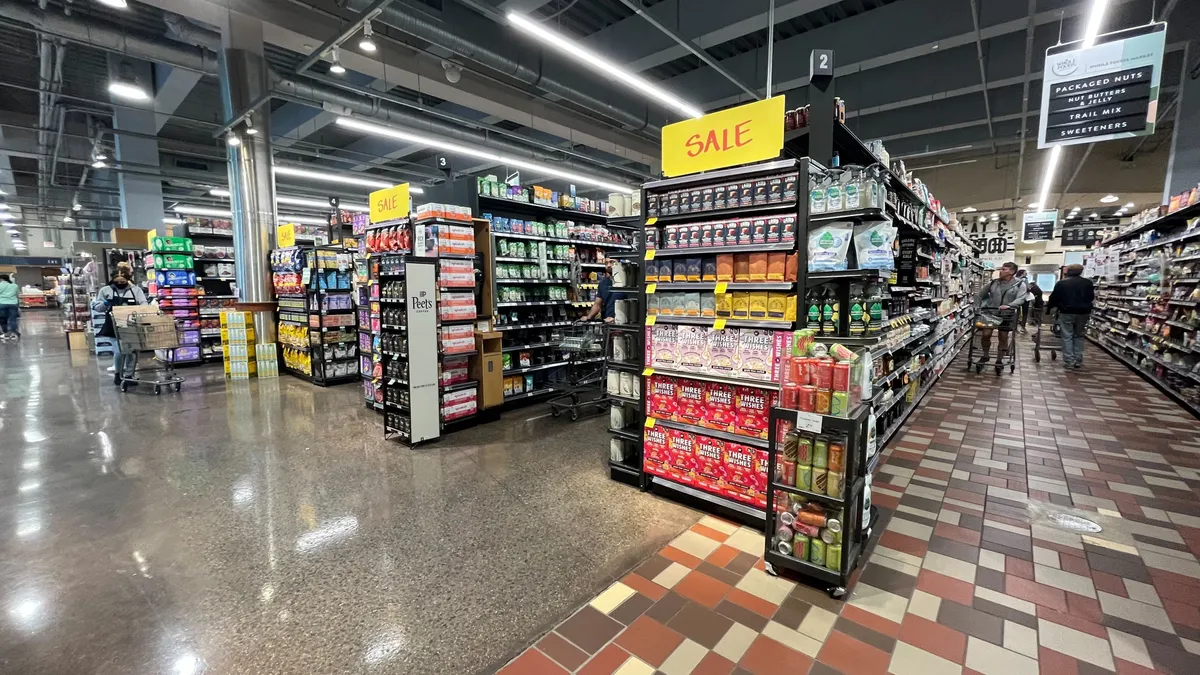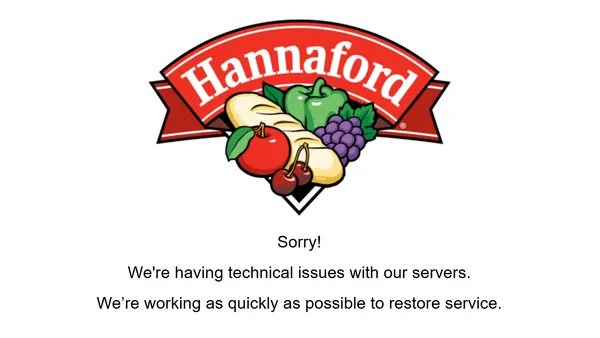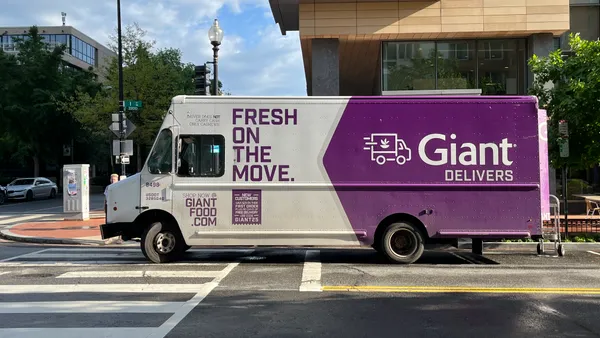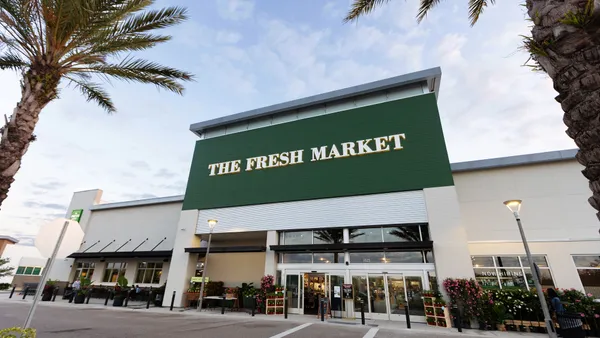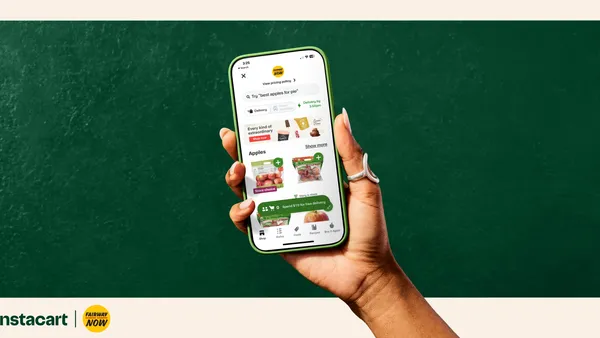U.S. consumers are warming to online grocery shopping. In a recent survey by Coresight Research, 38% of respondents said they have purchased groceries online in the previous 12 months, up from 23% the year prior, an increase of about 35 million shoppers. Between 2016 and 2018, the value of the online grocery market more than doubled, jumping from $12 billion to $26 billion.
And while growth in online spending for groceries in the U.S. hasn't yet matched the uptick in the number of online shoppers — spending is hovering around 2.5% — most major players are moving quickly to develop their logistics and consumer-engagement strategies for a segment of the market they expect to grow. At least one industry consultant recently predicted an imminent "explosion" in online grocery sales.
Still, as grocers are learning, selling online requires implementing new processes. The time and labor involved in filling online orders can further shave slim margins. Spoilage and waste are greater risks. With wary consumers dipping their toes in the water, you have to make your online experience a great one. It often takes just one out-of-stock message or a single less-than-fresh item for consumers to decide that buying food online — or at least shopping with a particular online grocer — isn't for them.
In the era of omnichannel sales, customers expect products where and when they want them, conditioned in part by years of successful shopping experiences on large ecommerce platforms such as Amazon, whose own recent push into the grocery business — online and otherwise — is helping to shape the online grocery business. For logistics operators and retailers in the grocery industry, meeting consumers' expectations today means processing more shipments faster, without dropping the ball on accuracy. As one writer on the subject recently put it, "The most efficient grocery-delivery companies are really logistics companies."
The emergence of RFID as a solution for grocery supply chains comes at the perfect time for grocers developing omnichannel strategies. Addressing challenges like inventory, expiry, spoilage and waste with RFID-enabled solutions today can give you a powerful advantage when the online market finally achieves liftoff.
Making sure consumers get what they ordered
Tagging every pallet, carton or, in some cases, every item with an RFID-enabled label provides unprecedented "atomic-level" visibility into supply chains and inventories, letting you see, at a glance, exactly what you have and where it is — enabling you to more accurately match inventories with demand. For online shoppers, that means fewer out-of-stocks. RFID tagging also improves order accuracy: A quick scan of a tote lets packers verify that the right items have been picked and packed for delivery, so consumers are sure to get exactly what they ordered.
Bringing your inventory in line with demand isn't just about providing a better customer experience — it can also help reduce waste. At Avery Dennison, we estimate that implementing RFID can help grocers cut waste by as much as 20% by reducing overstocking, making recall responses more precise, and reducing spoilage.
Selling by the sell-by date
A persistent barrier to online grocery shopping is consumers' skepticism about quality and freshness, especially when it comes to perishables like produce and meat. Indeed, delivery of expired goods has been a problem for large food omnichannel players.
But items that can tell a grocer or third-party seller that they are expiring are less likely to end up in a customer's delivery. With RFID, expiry information can be encoded in the tag and logged for monitoring, automatic or otherwise. Soon-to-expire items can be automatically discounted to maximize sales; items on the edge of expiry can be pulled from shelves.
RFID also supports blockchain-based inventory-management systems in providing consumers with information about product provenance and handling. RFID-tagged items can automatically supply that data to blockchain systems, eliminating the need to capture it by hand.
Keeping it 100% fresh
Another quality-control challenge for online grocers is ensuring that products are kept at the proper temperature during delivery or while awaiting pickup for a click-and-collect order. IoT-based solutions can enable better monitoring of temperature-sensitive products during their journey through the supply chain, ensuring they're kept in optimum conditions. Combining the visibility and shareability of RFID data with temperature sensors and other solutions further expands grocers' ability to monitor and manage temperature.
For early adopters, an advantage
In the scramble to establish cost-effective, consumer-pleasing online grocery businesses, it's clear that technology like RFID can play an important role however, according to a recent Deloitte study that surveyed grocers' strategies for selling fresh food, adoption of such technologies is, so far, quite low with just 34% adoption.
The capabilities of RFID-based solutions are perfectly matched for the challenges of omnichannel grocery sales. The apparel and beauty industries have demonstrated the ability through the use of RFID to increase supply chain efficiency, improve inventory accuracy, engage customers, and provide a more satisfying online shopping experience. It's only a matter of time before the grocery industry discovers these same benefits. Grocers who invest the time and capital in RFID today will enjoy a competitive advantage in the coming moment when U.S. consumers go from nibbling around the edges of online grocery shopping to taking a big, hungry bite.
Julie Vargas is Global Director of RFID market development for food at Avery Dennison.
Explore how RFID is making omnichannel for food possible — join Avery Dennison at NRF 2020

